Most Notorious Criminals In The World: Top 10 History

The terrible deeds of people who have gone beyond the bounds of normal criminality help history's chronicles to tell a dark and engrossing story. This article, titled Most Notorious Criminals In The World: Top 10 In History, dives into the terrifying biographies of those whose deeds have irreparably changed civilization. These people, frequently referred to as the pinnacle of evil, have captivated the public's attention with their heinous deeds, devious strategies, and capacity to engender fear on a global scale.
Each criminal on this list exhibits a different aspect of criminal behavior, from the cunning schemes of masterminds like Al Capone, who used organized crime to amass enormous power during the Prohibition era, to the enigmatic mystique of figures like Jack the Ripper, who terrorized the foggy streets of Victorian London. We seek to understand what compelled these people to carry out horrible atrocities that shook civilizations to their very foundations by delving into the psychological basis of their deeds.
The article examines the tremendous effects these criminals' heinous actions had on law enforcement, criminal justice institutions, and public perceptions of safety in addition to detailing their malicious activities.
We are forced to consider the fine line that divides everyday life from the world of crime as we look at the lives of these notorious individuals. What social, individual, or natural characteristics combined to produce these monsters? Most Notorious Criminals In The World: Top 10 In History invites readers to explore the darkest recesses of humanity and gain insight into the minds that planned some of the most shocking offences ever recorded through meticulous research and a narrative approach that blends historical context with psychological analysis.
Most Notorious Criminals In The World
- Leonid Minin 1947
- Charles Ponzi 1882 - 1949
- Jesse James 1847 - 1882
- Amado Carrillo Fuentes 1956 - 1997
- James ‘Whitey’ Bulger 1929
- Jean-Bernard Lasnaud 1942 -
- Meyer Harris ‘Mickey’ Cohen 1913 - 1976
- John Dillinger 1903 - 1934
- Pablo Escobar 1949 - 1993
- Al Capone 1899 - 1947
1. Leonoid Minin

Leonid Efimovich Minin, who was born in the Ukraine in 1947 and later moved to Israel in the 1970s, is well-known for being a global armaments dealer. Including Italy, Germany, and Bolivia, he was subject to multiple arrests and convictions. Minin was captured by Italian officials in 2000 near Milan, bringing to an end a surveillance operation that had continued since 1992 because of concerns that he had been involved in shady arms deals, particularly with countries in West Africa. He was given a two-year prison sentence in Italy after being arrested, but he was released after serving just one year.
READ ALSO » Top 10 Most Notorious Serial Killers In History
Beyond the trafficking of weapons, Minin is also allegedly involved in the illegal ivory trade. In 2013, he was accused of smuggling elephant tusks and was threatened with arrest in Switzerland. The legal actions against him are still pending, despite the fact that he was granted freedom on bond. Minin is now wanted and is thought to be living in Ukraine. The seriousness of his actions is highlighted by the fact that he is wanted in a number of countries and has an Interpol red alert. Arms trafficking, illicit ivory trade, forgeries, theft, and money laundering are among the allegations against Minin, making him a serious threat to international security who needs to be apprehended and brought to justice.
2. Charles Ponzi 1882 - 1949
Italian trickster and conman Charles Ponzi (March 3, 1882 – January 15, 1949) operated in both the United States and Canada and went by the aliases Charles Ponci, Carlo, and Charles P. Bianchi.
He became well-known for creating the Ponzi scheme, a dishonest investment programmed that promises high returns with little risk. Ponzi is credited with creating the Ponzi scam, which was first implemented on a big scale. Ponzi's method of operation was paying back previous investors with money from fresh ones. By taking advantage of a flaw in the international postal reply coupon system, he promised investors profits by stating he could buy these coupons abroad for less than their U.S. face value and redeem them domestically at a profit.
However, Ponzi's scam finally collapsed because it needed a steady stream of new investors to replace the ones who had already invested. Ponzi was subsequently apprehended, found guilty of fraud, and given a five-year prison term after the scam crashed.
Ponzi's scheme is still used by con artists today, making it a common type of financial fraud. The key takeaway is to proceed with utmost caution when considering high-return, low-risk investment options because these kinds of deals sometimes mimic Ponzi schemes. Ponzi was convicted of forgery and counterfeiting in addition to his well-known deception, which added to his complicated and long-lasting legacy that has been closely examined by financial specialists.
3. Jesse James 1847 - 1882

Jesse Woodson James, an American outlaw, leader of the James–Younger Gang, and a notorious bank and train robber, was born on September 5, 1847, in Kearney, Missouri, and met his demise on April 3, 1882, in Saint Joseph, Missouri.
Raised in a family with strong pro-Southern sentiments, James and his brother Frank aligned with pro-Confederate guerrillas, dubbed bushwhackers, during the American Civil War, participating in operations led by William Quantrill and Bloody Bill Anderson. Accused of brutal acts against Union soldiers and abolitionists, they were linked to events such as the Centralia Massacre in 1864.
READ ALSO » Richest Criminals In The World 2024: Top 10 In History
Post-war, the James gang delved into robbery, targeting banks, trains, and stagecoaches across the Midwest. Though they garnered folk hero status, seen as modern-day Robin Hood figures, no evidence supports claims of distributing loot beyond their circle.
In 1882, Robert Ford, a new gang recruit, shot and killed James in pursuit of a reward and amnesty. James's death captivated the public, etching him as a Wild West legend.
Jesse James, aged 34 at his demise, left behind his wife Zerelda and four children. Sporting distinctive features like a flowing mustache and black hat, he displayed prowess in marksmanship and horsemanship, coupled with a charismatic charm. Despite his criminality, he became an enduring subject of books, films, and music, with his grave a sought-after tourist spot. A polarizing figure, James straddled criminality and heroism, an enigmatic legacy that captivates present-day fascination.
4. Amado Carrillo Fuentes 1956 - 1997
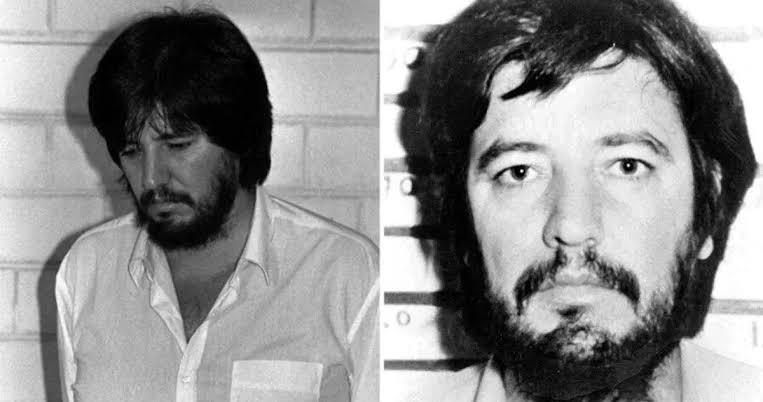
Amado Carrillo Fuentes (17 December 1956 – 4 July 1997), also recognized as El Señor de los Cielos (The Lord of the Skies), held the mantle of a Mexican drug lord, spearheading the Juárez Cartel from 1993 until his demise in 1997. His standing as one of history's most formidable drug traffickers remains undisputed.
Born into an agrarian family in Navolato, Sinaloa, Mexico, Carrillo Fuentes embarked on his criminal journey as a marijuana smuggler in the early 1980s. In 1989, he aligned with the Juárez Cartel, previously led by Rafael Aguilar Guajardo. Following Aguilar Guajardo's assassination in 1993, Carrillo Fuentes ascended to the helm of the cartel.
Prominently, Carrillo Fuentes employed aircraft for drug transportation, boasting an extensive fleet that encompassed Boeing 727s and DC-8s. These planes served dual roles in money laundering and weapon smuggling. Characterized by secrecy, Carrillo Fuentes seldom interacted with fellow traffickers, adopting aliases and undergoing multiple plastic surgeries to alter his appearance.
In July 1997, Carrillo Fuentes passed away in a Mexican medical facility post-extensive plastic surgery. While the official cause was cited as a heart attack, speculation abounds regarding poisoning or foul play.
His demise triggered turmoil within the Juárez Cartel. His siblings, Vicente and Rodolfo, succeeded him, but never managed to replicate his dominion. While his daughter's identity remains private, his grandson, Julio Cesar Carrillo Leyva, met his demise in a 2022 plane crash.
5. James ‘Whitey’ Bulger 1929
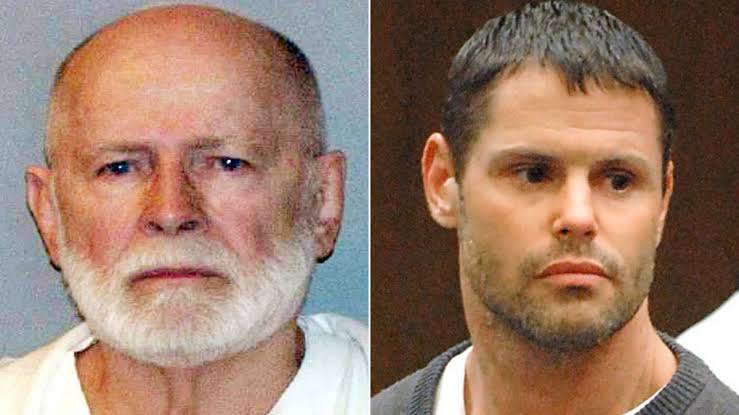
READ ALSO » Top 10 Most Notorious Hackers Of All Time
James Joseph Whitey Bulger Jr., an American organised criminal figure who oversaw the Winter Hill Gang in the Somerville neighborhood's Winter Hill neighbourhood, northwest of Boston, lived from September 3, 1929, until October 30, 2018. He was the second of six children born to Irish immigrants in Dorchester, Massachusetts. Bulger's criminal career began in his teenage years, and his first arrest came when he was just 13 years old. He was later found guilty of armed robbery in 1956 and sentenced to 20 years in jail, nine of which he actually served.
After being freed, Bulger rose to become the leader of the Winter Hill Gang, a formidable Irish-American organised crime group. The group organised a wide range of illegal activities, including extortion, drug trafficking, gambling, and murder. Bulger had two roles.
Bulger fled Boston in 1994 as a result of looming federal racketeering indictments, becoming a wanted fugitive and being added to the FBI's list of the Ten Most Wanted Fugitives. He evaded capture for 16 years before being found in Santa Monica, California, in 2011.
Following his trial, Bulger was found guilty on 31 criminal counts, including murder, conspiracies, and racketeering. Two consecutive life sentences with an additional five years made up his punishment. Bulger, who died in prison in 2018 at the age of 89, was the subject of books, films, and documentaries that were all influenced by his story, which was best portrayed by Johnny Depp in the 2015 film Black Mass.
6. Jean-Bernard Lasnaud 1942
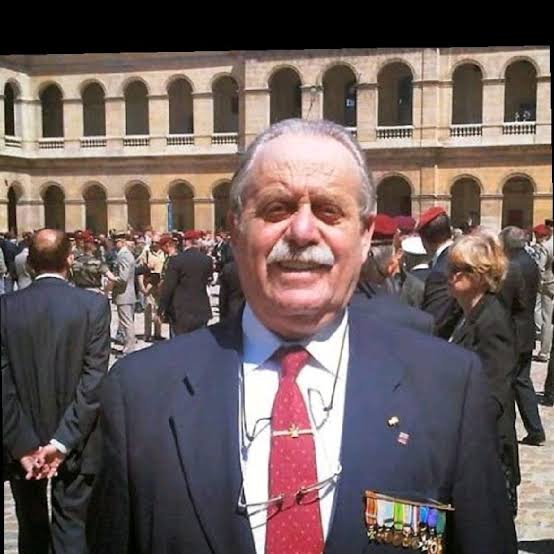
French arms dealer Jean-Bernard Lasnaud, who was born on March 12th, 1942, was accused of arranging the shady transfers of 6,500 tonnes of weapons from Argentina to Croatia and Ecuador in the middle of the 1990s. The United Nations and international embargoes were flagrantly broken by these transactions. He was captured by Swiss authorities in May 2001 as a result of an Interpol warrant. He is currently in the process of being extradited to Argentina, where he is charged of importing weapons as well as abuse of authority.
France's Neuilly-sur-Seine is where Lasnaud was born, and he began dealing in weaponry there in the early 1970s. His reputation stems from his role in arranging armament deals including Angola, Mozambique, and Sierra Leone. However, he dabbled in illegal arms dealing for Croatia and Ecuador in the middle of the 1990s. These behaviours were against U.N. embargoes, imposed due to the Bosnian War and the Ecuadorian-Peruvian War.
After an Interpol investigation, Lasnaud was apprehended in Switzerland in May 2001. He was then extradited to Argentina in 2003, where he was accused of abuse of authority and smuggling of weapons. His trial continues while he is still being held in pre-trial custody; if convicted, he may receive a maximum 22-year jail sentence.
7. Meyer Harris ‘Mickey’ Cohen 1913 - 1976
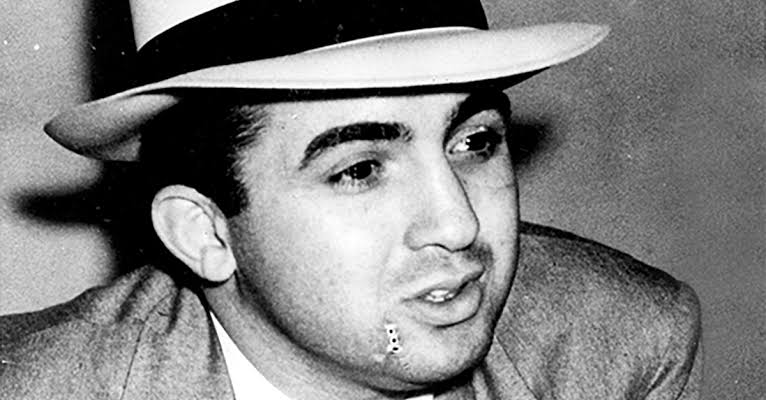
Meyer Harris Mickey Cohen (September 4, 1913 – July 29, 1976) stood as an American gangster, boxer, and entrepreneur prominent in mid-20th century Los Angeles. He gained renown for his flamboyant demeanor and his affiliation with the criminal underworld in Los Angeles.
Cohen's origins trace back to Brooklyn, New York, where he was born to Russian Jewish immigrants. His foray into criminal pursuits commenced as a youth, engaging in number running and gambling. By the early 1930s, he relocated to Los Angeles and took up the role of bodyguard for gangster Bugsy Siegel. Gradually, Cohen ascended to a key lieutenant in Siegel's operation, participating in a spectrum of illicit enterprises encompassing gambling, extortion, and prostitution.
Known for his showy style, Cohen projected a flamboyant image. His ostentatious attire, jewelry, and contingent of bodyguards marked his presence. Additionally, Cohen showcased his boxing prowess, even pursuing a stint as a professional boxer.
In 1951, Cohen faced conviction for tax evasion, incurring a five-year prison sentence. While paroled in 1956, he persisted in criminal involvements. His journey also encompassed surviving an assassination attempt in 1961, which left him partially paralyzed.
Cohen's life concluded in 1976 due to cancer, with his age at the time being 62. His character embodies a blend of contrasts, portraying both a ruthless gangster and a savvy entrepreneur skilled in manipulating the media. Cohen's profound influence within the Los Angeles criminal realm for many years crafts a captivating segment within the annals of organized crime history.
8. John Dillinger 1903 - 1934

John Herbert Dillinger (June 22, 1903 – July 22, 1934) operated as an American bank robber and criminal during the era of the Great Depression. He led the Dillinger Gang, which faced accusations of robbing 24 banks and four police stations. Dillinger's criminal record included multiple imprisonments and two daring escapes. While he was charged with the murder of an East Chicago police officer, Dillinger's sole homicide charge, it transpired when the officer shot him in his bullet-resistant vest during a shootout.
Born in Indianapolis, Indiana, Dillinger spent his formative years in Mooresville, Indiana. He terminated his education after eighth grade and engaged in a variety of jobs, encompassing roles as a gas station attendant, mechanic, and farmhand. In 1924, he married Beryl Hovious, but the marriage dissolved in 1929.
Dillinger's criminal trajectory commenced in 1924, triggered by an arrest for carrying an unlicensed firearm. Although initially sentenced to a year in prison, he secured release after serving only six months. His 1933 arrest for the robbery of an East Chicago grocery store culminated in a 10 to 20-year prison sentence, from which he managed to escape in 1934.
Following his escape, Dillinger evolved into a folk hero for countless Americans grappling with the hardships of the Great Depression. Viewed as a modern-day Robin Hood, he symbolized retribution against the banks they perceived as betraying them. Dillinger and his gang conducted bank heists across Indiana, Ohio, Illinois, and Wisconsin, extending their exploits to include a police station in Lima, Ohio, from which they pilfered firearms and ammunition.
On July 22, 1934, Dillinger met his demise at the hands of federal agents outside Chicago's Biograph Theater. His age at the time was 31.
Dillinger's passing marked the conclusion of his public fascination. Nonetheless, his enduring presence in American culture persists, inspiring a multitude of books, movies, and television productions.
9. Pablo Escobar 1949 - 1993

Pablo Escobar, a Colombian drug lord, narcoterrorist, and political figure, founded and solely directed the Medellín Cartel. Earning the moniker the king of cocaine, Escobar became history's wealthiest criminal, accumulating an estimated net worth of $30 billion at the time of his passing—an amount equating to $70 billion in 2022. His cartel held a monopoly over cocaine trafficking into the U.S. during the 1980s and early 1990s.
Escobar's birthplace was Rionegro, Colombia, in 1949. Embarking on a criminal trajectory as a minor thief and smuggler, he ascended to lead the Medellín Cartel, accountable for smuggling billions of dollars' worth of cocaine into the U.S. His drug empire showered him with immense wealth, fueling opulent living and corrupting politicians and law enforcement. Violence and intimidation marked his modus operandi, resulting in the deaths of countless individuals.
The Colombian government and the U.S. exerted mounting pressure on Escobar's drug enterprise during the 1980s. Consequently, he was compelled to abandon Medellín and seek refuge in hiding. In 1993, Colombian law enforcement shot and killed him.
While Escobar's demise didn't terminate the drug trade in Colombia, it did signify the conclusion of an epoch. As one of history's most formidable and merciless drug lords, his narrative remains an enduring reminder of the perils associated with drug trafficking, casting a haunting shadow over the world to this day.
10. Al Capone 1899 - 1947
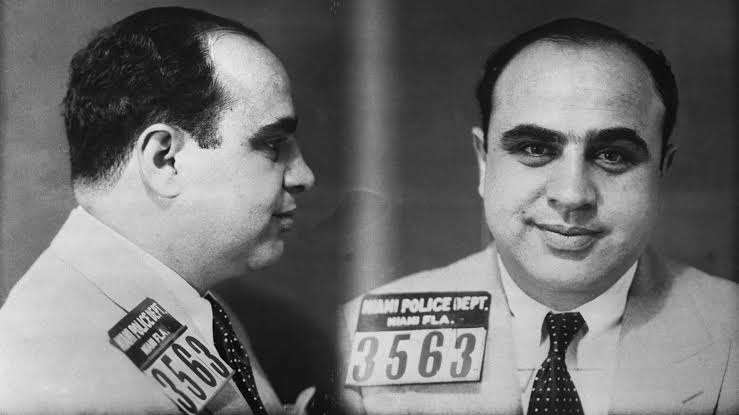
Al Capone (1899-1947) became well-known as an American gangster during the Prohibition time, leading the Chicago Outfit. Born in Brooklyn, New York, to Italian parents, he got involved in crime as a young person, joining the Five Points Gang and working at places like brothels. In 1920, he moved to Chicago and became a lieutenant in the Colosimo mob. After Colosimo was killed that year, Capone took over and called it the Chicago Outfit.
With Capone in charge, the Chicago Outfit became a strong criminal group in the United States. They controlled illegal alcohol trade, gambling, prostitution, and other bad activities. Capone was known for being violent, and he was linked to many deaths.
In 1931, Capone was found guilty of not paying taxes and got an 11-year prison sentence. He got out in 1939, but his health was bad, and he died in 1947.
Capone was both tough and complex. Even though he was known for being charming and giving to others, some saw him like Robin Hood. He's still one of the most famous gangsters in the U.S.
Some other things to know about Al Capone:
- People called him Scarface after a fight in 1919.
- He was married to Mae Capone from 1918 until he died in 1947.
- He had a son named Albert Francis Capone.
- He died when he was 48 in 1947 because his heart stopped.
Al Capone's story shows both the bad side of people and how the American dream can be powerful.
Conclusion
The stories of these top 10 most infamous criminals in history serve as timeless cautionary tales as we draw to a conclusion this terrifying history. Their deeds have permanently changed society and served as a reminder of the human psyche's capability for evil. We gain insights into the intricate interplay of causes that some people experience that lead them to commit horrific atrocities by studying the lives and behaviors of these people. May the lessons from history's darkest chapters help us on our way to a future of greater comprehension, alertness, and communal empathy.
